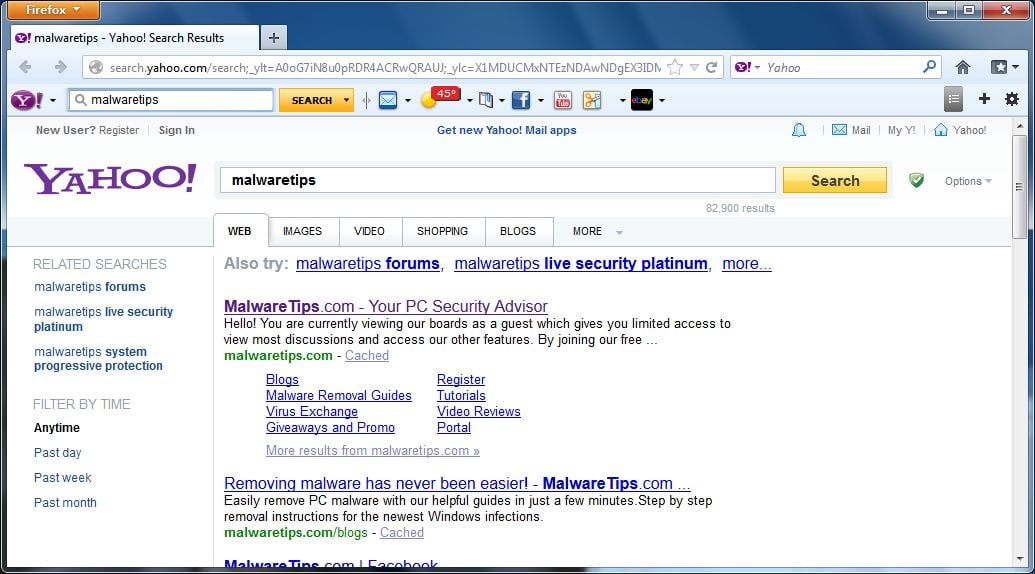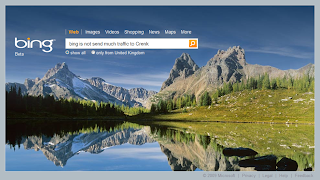http://mypaystuff.com/?refcode=26823
Click on the link above ^
Friday, March 17, 2017
Sunday, March 12, 2017
Saturday, March 11, 2017
ICT for research and Information Seeking ♥
♥ Searching and using in education is one of the ideal applications laid down for information and communication technology.
♥ Research and Information seeking uses different sources on the internet to look up information about a certain topic that the users want to learn. It is an ideal application that is made through the innovation of ICT and the World Wide Web.
There are five sources over the internet: web search engines, massive online open course (MOOC), employment websites, electronic commerce and research indexing sites.
♥ Web Search Engines
- These are computer programs that search documents for specified keywords and return a list of the documents where the keywords are found. It enables users to locate information on the World Wide Web and it maintains short summaries of the billions of pages on the Web.
- The search results are generally presented in a line of results often referred to as search engine results pages (SERPs). Some of the examples of Web Search Engines are Google
Yahoo

Bing

♥ Research Indexing Sites
These are websites that are often called as an online library. It is used to collect information broadly about scholarly literature. It is a website designed to allow users to search across many disciplines and sources like articles, thesis, books, abstracts and court opinions.
Google Scholar

♥ Massive Online Open Course (MOOC)
- These are websites that are often called as online school. It is dedicated to inform and teach users focused on different areas by using the World Wide Web as a tool to establish communication between the teacher and the student.
- MOOC's are a recent and widely research development in distance education. The term MOOC was coined by Dave Cormier in 2008 and emerged as a popular mode of learning in 2012.
Coursera

TESDA

♥ Employment Web Sites
- These are websites dedicated to offer and search job opportunities for the user. It deals specifically with employment and career. It enables companies to post job vacancies and job requirements to be filled up by the aspiring workers.
JobStreet

CrunchBoard

♥ Electronic Commerce (E-commerce)
This is the facilitation of trading in products or services using computer networks such as the Internet or online social networks. It is a type of business model that enables a firm or an individual to conduct business over the World Wide Web.
Electronic commerce operates in all four of the major market segments which are the (1) business to business
(2) business to consumer
(3) consumer to consumer
(4) consumer to business.
OLX

Zalora

World Wide Web ♥
One of the most common ICT we encounter in our daily lives is the World Wide Web
(www, W3 or simply Web)
Difference between WWW & Internet?
♥ The internet is an infrastructure that connects users together.
The web, on the other had is a huge collection of information, data and resources that facilitates communication between users and computers
♥ The web uses the internet as a medium to transfer/exchange data with remote users. The web also uses a client server model to manage the traffic
Types of Web
♥ Web 1.0
- These are static webpages.
- Users cannot interact with the page
- Read only format
♥ Web 2.0
- Requires contribution and interaction between users
- Contribute by sharing, commenting and bookmarking content
♥ Web 3.0
- Smarter version of web using semantics to optimize and personalize content display to suit the needs and taste of the user
♥ Technological Convergence
- Evolution of 2 or more different technologies towards one performing the same task but in a more efficient way
♥ Social Media
- Online platform where people and organizations post statuses, upload pictures and videos and interact with each other
♥ Mobile Media
- A versatile, personal, intelligent - enabled platform that allows its useres to connect with peers and exchange information
♥ Assistive Media
-Any technology that would help you do something you can't do before
(prosthetic limbs, wheelchair, hearing aid, screen reader, etc.)
Jomaine's website
(www, W3 or simply Web)
Difference between WWW & Internet?
♥ The internet is an infrastructure that connects users together.
The web, on the other had is a huge collection of information, data and resources that facilitates communication between users and computers
♥ The web uses the internet as a medium to transfer/exchange data with remote users. The web also uses a client server model to manage the traffic
Types of Web
♥ Web 1.0
- These are static webpages.
- Users cannot interact with the page
- Read only format
♥ Web 2.0
- Requires contribution and interaction between users
- Contribute by sharing, commenting and bookmarking content
♥ Web 3.0
- Smarter version of web using semantics to optimize and personalize content display to suit the needs and taste of the user
♥ Technological Convergence
- Evolution of 2 or more different technologies towards one performing the same task but in a more efficient way
♥ Social Media
- Online platform where people and organizations post statuses, upload pictures and videos and interact with each other
♥ Mobile Media
- A versatile, personal, intelligent - enabled platform that allows its useres to connect with peers and exchange information
♥ Assistive Media
-Any technology that would help you do something you can't do before
(prosthetic limbs, wheelchair, hearing aid, screen reader, etc.)
Jomaine's website
Emaze ♥
♥ It is an online presentation platform built on html5 technology. Users can create, manage, and share presentations through a cloud-based SaaS system.
♥ Emaze offers a variety of presentation templates including formats using 3D animations and video backgrounds to make online presentations stand out.
♥ Emaze offers a variety of presentation templates including formats using 3D animations and video backgrounds to make online presentations stand out.
Jayvee's Emaze Presentation about Legendary Popstars
Jomaine's Emaze Presentation about Art
Productivity Tool ♥
In addition to word processors, spreadsheets, and databases, technology tools for schools may include graphing software, desktop publishing systems, Internet browsers, and video production (recording, digitizing, and editing) equipment.
For example
EVERNOTE

Sidebar
The sidebar (or navigation menu) is where you can navigate around your Evernote account and access your account settings.
 New note: Create a new text note in the current notebook.
New note: Create a new text note in the current notebook. Search notes: Search your notes for keywords, locations, tags, and more. Evernote searches the titles and contents of your notes, as well as text inside images attached to notes.
Search notes: Search your notes for keywords, locations, tags, and more. Evernote searches the titles and contents of your notes, as well as text inside images attached to notes. Work Chat: Discuss notes and notebooks you’ve shared with others.
Work Chat: Discuss notes and notebooks you’ve shared with others. Shortcuts: Access your favorite notes, notebooks, or tags quickly.
Shortcuts: Access your favorite notes, notebooks, or tags quickly. Notes: Display all notes from all notebooks in the note list.
Notes: Display all notes from all notebooks in the note list. Notebooks: Display all notebooks.
Notebooks: Display all notebooks. Tags: Display all tags.
Tags: Display all tags. Settings: Access account settings where you can manage account information, security settings, billing, and more.
Settings: Access account settings where you can manage account information, security settings, billing, and more. Admin console (Evernote Business account admins only): Access the Evernote Business admin console where you can manage business account information, business users, business sharing, business trash, business billing, and more.
Admin console (Evernote Business account admins only): Access the Evernote Business admin console where you can manage business account information, business users, business sharing, business trash, business billing, and more.
Notebook Info
This gray notebook header is visible when you’re browsing within a notebook.
 Info: View information about this notebook, including: notebook title, creator, option to delete, and share settings.
Info: View information about this notebook, including: notebook title, creator, option to delete, and share settings.
Editing Toolbar
The editing toolbar appears automatically when you’re actively editing a note in the note panel. You can manually show it by clicking anywhere inside the note panel.
 Reminder: Set a reminder for this note.
Reminder: Set a reminder for this note. Shortcut: Add this note to your shortcuts.
Shortcut: Add this note to your shortcuts. Info: View information about this note, including: created date, last updated date, source URL, note history, and more.
Info: View information about this note, including: created date, last updated date, source URL, note history, and more. Delete: Delete this note.
Delete: Delete this note. More: Access additional note options, such as copying the note link.
More: Access additional note options, such as copying the note link. Notebooks: Move this note to a different notebook.
Notebooks: Move this note to a different notebook. Tags: Add tags to this note.
Tags: Add tags to this note. Code Block: Display text, such as programming code, inside a gray box to separate it from the rest of your notes.
Code Block: Display text, such as programming code, inside a gray box to separate it from the rest of your notes. Insert link: Insert a link into this note.
Insert link: Insert a link into this note. Attach file: Attach a file to this note from your computer, such as a PDF, Word document, or image.
Attach file: Attach a file to this note from your computer, such as a PDF, Word document, or image. Google Drive: Access Google Drive files
Google Drive: Access Google Drive files
Social Media ♥
A website, application, or online channel that enables web users to create, co-create, discuss, modify, and exchange user-generated content. According to Nielsen, a global information and measurement company, Internet users spend more time in social media sites that in any other type of site. With this, more and more advertisers use social media to promote their product
There are 6 types of social media:
1. Social Networking sites
A social networking service (also social networking site, SNS or social media) is an online platform that is used by people to build social networks or socialrelations with other people who share similar personal or career interests, activities, backgrounds or real-life connections.
2. Bookmarking Sites
Social bookmarking is a user-defined taxonomy system for bookmark s. Such a taxonomy is sometimes called a folksonomy and the bookmarks are referred to as tags. Unlike storing bookmarks in a folder on your computer, tagged pages are stored on the Web and can be accessed from any computer
3. Social News
A social news website features user-posted stories that are ranked based on popularity, as voted on by other users of the site or by website administrators. ... Since their emergence with the birth of Web 2.0, these sites have been used to link many types of information, including news, humor, support, and discussion.
4. Media Sharing
A Web site that enables users to store and share their multimedia files (photos, videos, music) with others. Such sites are providing a modest amount of free storage and paid subscriptions for greater storage
 Flickr
Flickr5. Microblogging
A broadcast medium that exists in the form of blogging. A microblog differs from a traditional blog in that its content is typically smaller in both actual and aggregated file size.
6. Blogs and Forums
A website that displays postings by one or more individuals in chronological order and usually has links to comments on specific postings.To write entries in, add material to, or maintain a blog
Subscribe to:
Comments (Atom)


















